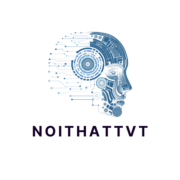Key Takeaways
- User-Friendly Language: The guide simplifies complex computer concepts using clear, jargon-free language, making it accessible for beginners and intermediate users alike.
- Step-by-Step Instructions: Each topic provides clear, actionable steps, facilitating understanding of tasks like setting up a computer or installing software.
- Visual Aids: Screenshots and diagrams enhance comprehension and retention, catering to different learning styles.
- Comprehensive Coverage: It addresses key topics such as hardware, software, troubleshooting, and internet safety, providing a well-rounded foundation in computer literacy.
- Target Audience Diversity: Designed for beginners, intermediates, and various age groups, the guide adapts its approach to meet different learning needs and preferences.
- Practical Applications: The guide includes real-world examples and tips, enabling users to immediately apply their newly acquired skills in daily computing tasks.
In today’s digital age, understanding computers is essential for navigating everyday life. Yet for many, the world of technology can feel overwhelming. The Computers for Dummies guide breaks down complex concepts into simple, easy-to-understand language, making it accessible for everyone, regardless of their tech background.
Whether someone’s just starting out or looking to brush up on their skills, this guide offers practical tips and tricks. From basic terminology to everyday applications, it empowers users to approach technology with confidence. Embracing computers doesn’t have to be daunting; it can be an exciting journey into a world of endless possibilities.
Computers for Dummies
Computers for Dummies serves as a comprehensive guide designed for users who seek to understand fundamental computer concepts. It demystifies technology by breaking down complex terminology into manageable information. The guide covers essential topics like hardware, software, and troubleshooting commonly encountered issues.
Key Features
- User-Friendly Language: The guide employs simple language that resonates with readers new to technology.
- Step-by-Step Instructions: Each section provides clear, actionable steps for performing tasks such as setting up a computer or installing software.
- Visual Aids: Diagrams and screenshots enhance understanding by illustrating instructions visually.
- Practical Tips: It offers real-world tips that facilitate everyday computing tasks, covering topics from internet safety to software applications.
Target Audience
- Beginners: Individuals unfamiliar with computers benefit from foundational knowledge and basic functionalities.
- Intermediate Users: It aids those who want to refine their skills and navigate more advanced features.
- Educators and Parents: The guide provides resources to help teach others about computer literacy.
Accessibility
Computers for Dummies is structured to accommodate various learning styles, catering to visual, auditory, and kinesthetic learners. Each section supports increased engagement and retention of information, making the learning process effective and enjoyable.
This guide empowers users to embrace digital technology confidently, breaking down barriers that often discourage non-tech-savvy individuals.
Key Features of Computers for Dummies
The Computers for Dummies guide incorporates essential features that simplify the learning process. These features facilitate a better understanding of computers for users across various skill levels.
User-Friendly Approach
User-friendly language makes complex concepts accessible. Clear explanations avoid jargon, ensuring comprehension for all users. Step-by-step instructions guide individuals through tasks, from basic operations to more advanced techniques. Visual aids, such as screenshots and diagrams, enhance learning and retention. Engaging examples provide practical context, making it easy to apply new skills immediately.
Comprehensive Coverage
Comprehensive coverage of fundamental topics ensures learners grasp essential computer concepts. The guide addresses hardware and software, explaining components like processors, memory, and operating systems. Troubleshooting sections empower users to solve common issues independently. Diverse topics, including internet usage, security, and productivity software, prepare users for effective daily computing. This thorough approach caters to beginners and intermediate users, promoting a broader understanding of technology.
Target Audience
The Computers for Dummies guide targets a diverse audience, including beginners, intermediate users, and various age groups. It aims to provide foundational knowledge and practical skills necessary for navigating the digital world.
Beginners and Novices
Beginners and novices represent the primary audience for the guide. They may lack prior experience or confidence in using computers. Key features tailored for this group include:
- Clear Language: The guide uses accessible language that simplifies computer terminology.
- Step-by-Step Instructions: Each concept includes detailed, sequential instructions to facilitate learning.
- Visual Aids: Images, screenshots, and diagrams illustrate processes, enhancing understanding.
- Hands-On Examples: Practical exercises allow users to apply new skills immediately, reinforcing learning.
Special Considerations for Different Age Groups
Different age groups face unique challenges and learning preferences when it comes to technology. The guide addresses these considerations effectively:
- Children: Engaging illustrations and interactive content capture children’s attention, making learning fun.
- Teenagers: The use of relatable examples and real-life applications appeals to teens, encouraging them to explore technology.
- Adults: Adults benefit from concise explanations and practical applications relevant to their personal and professional lives.
- Seniors: Larger text, straightforward instructions, and emphasis on common tasks help seniors gain confidence with technology.
By accommodating various age groups and skill levels, the Computers for Dummies guide empowers users to embrace digital technology fully.
Strengths of Computers for Dummies
The Computers for Dummies guide excels at making technology accessible through clear language and practical tips. Its strengths lie in simplifying complex concepts for diverse learners.
Clear Explanations
The guide uses straightforward language to clarify technical terms. Each topic begins with a definition, ensuring users grasp essential concepts before diving deeper. Clear distinctions between hardware and software enhance understanding. For instance, it explains components like the CPU and RAM in everyday terms. This clarity helps eliminate confusion, making learning more approachable.
Practical Examples
The guide includes numerous practical examples that illustrate computing tasks in real-life scenarios. Users encounter relatable situations, such as setting up email accounts or using word processing software. Each example offers step-by-step guidance, allowing users to follow along and apply their knowledge immediately. By demonstrating functionality in a tangible context, the guide fosters confidence and encourages user engagement with technology.
Limitations of Computers for Dummies
The Computers for Dummies guide, while comprehensive, has its limitations that users should consider. Recognizing these can enhance the learning experience and better manage expectations.
Technical Depth
The guide simplifies concepts, which may restrict technical depth. Some readers might seek more in-depth analysis of specific topics, such as advanced programming or network security. This limitation can hinder users looking for expertise beyond foundational knowledge. Those interested in niche areas might find the content lacking, requiring supplementary resources to fully grasp complex subjects and applications.
Updates and Relevance
The rapidly evolving nature of technology can render some information outdated. Although the guide is periodically updated, certain sections may not reflect the latest trends or advancements, such as emerging software applications or cutting-edge hardware. Users relying solely on the guide may miss critical information that enhances their computing experience and knowledge. Regularly seeking current sources ensures users stay informed and able to adapt to new technologies effectively.
Embracing Technology
Embracing technology doesn’t have to be overwhelming. The Computers for Dummies guide offers an accessible pathway for users at any skill level. With its practical tips and user-friendly approach, it transforms complex concepts into manageable knowledge.
Whether someone is just starting out or looking to refine their skills, this guide equips them with the tools needed for confident computer use. It fosters a deeper understanding of essential topics while accommodating diverse learning styles.
By engaging with this resource, users can enhance their digital literacy and feel empowered in today’s tech-driven world. Embracing these tools will ultimately lead to a more enjoyable and productive computing experience.



